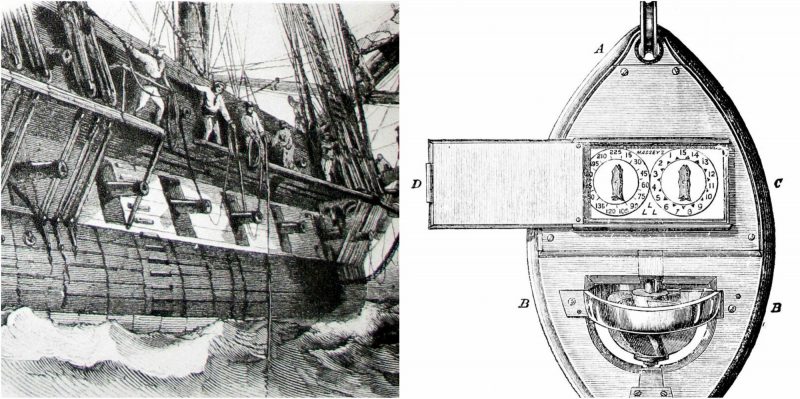Determining the depth of water in an area where a ship passes has been an important task since the beginning of naval history. The act of measuring depth is called depth sounding, or simply sounding.
In this case, the word “sounding” is not connected with the word “sound,” instead, it derives from the Old English word “sund” which means swimming, water, or sea. Sounding measurements were usually taken in fathoms or feet.
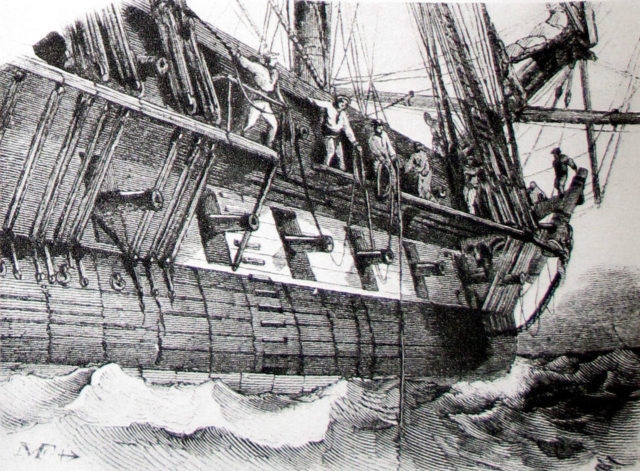
The most primitive tool for depth sounding was called a sounding line, or lead line: a thin rope of a certain length, with a lead plummet on its end. The lead lines were swung or cast by the “leadsman,” usually from part of the ship called “the chains”- small platforms, built on either side of the hull of a ship. To make sounding easier at sea, at bigger depths, sailors used to tie marks made of leather, calico, serge or some other material. Those marks were placed at certain intervals and shaped and attached so that they could be easily read during day or night. Marks were placed at every second or third fathom, for example: at 2, 3, 5, 7, 10, 13, 15, 17, and 20 fathoms. After dropping the lead, the leadsman called out the depths. If a particular depth was exactly at a mark, he would say: “by the mark,” and then say the number. If the depth was somewhere between two numbers, he would say: “by the deep” and then say an estimated number of fathoms.
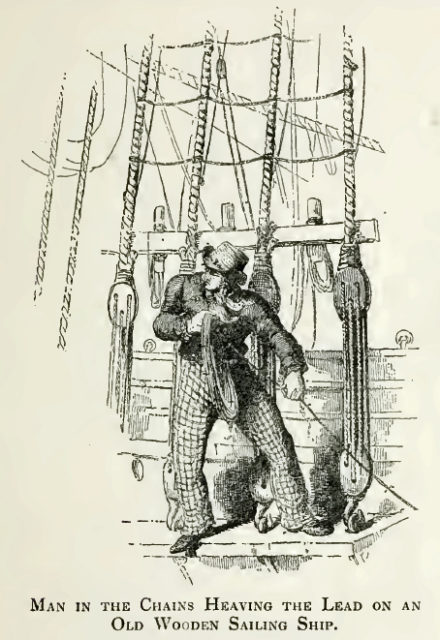
Traditionally, specific terms were used for some depth measurements, such as “deep six” (a sounding of six fathoms), “by the mark twain!” (the depth of two fathoms). Yes, Mark Twain, the famous author who was formerly a river pilot on the Mississippi, probably adopted his pen name from this sounding term.
Lead lines for measuring depth have been in use since ancient times. A number of sounding leads have been discovered in ancient Greek and Roman wrecks. This technique was in use during the early 20th century when some modern devices started replacing it.
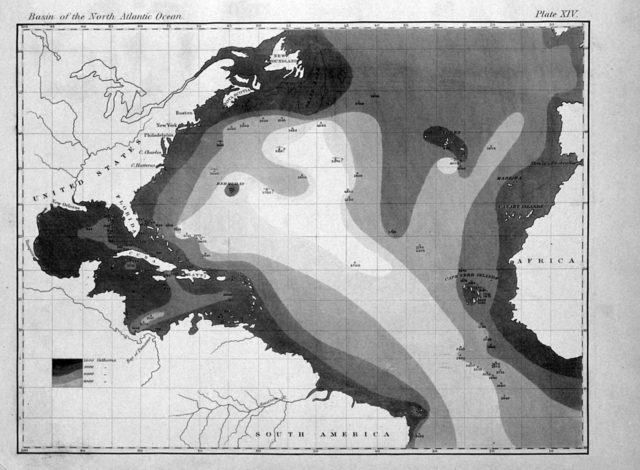
The purpose of sounding was not only determining the depth for safety reasons, but it was also useful for establishing the position of the ship and ascertain the composition of the seabed. For this purpose, the sounding lead was usually coated in animal fat (tallow). When the lead hit bottom, part of the sediment (sand, pebbles, clay, shells) would stick to it. Then the officers could examine it and gather useful information for anchoring and pilotage.
Sounding mechanisms started to appear in the 19th century. One of the most popular sounding machines was invented in 1802 by a British clockmaker called Edward Massey. This sounding machine was designed to be fixed to a traditional sounding lead line. It had a small rotor part that was turning a dial while the lead was sinking deeper into the water. When the sea floor was reached, the fathom dial would lock and stop counting the depth. The mechanism was then hauled back on the ship, and a more precise depth could be read. By 1811, every Royal Navy ship had one of these devices. The Royal Navy used another sounding mechanism during this time called Peter Burt’s buoy and nipper device.
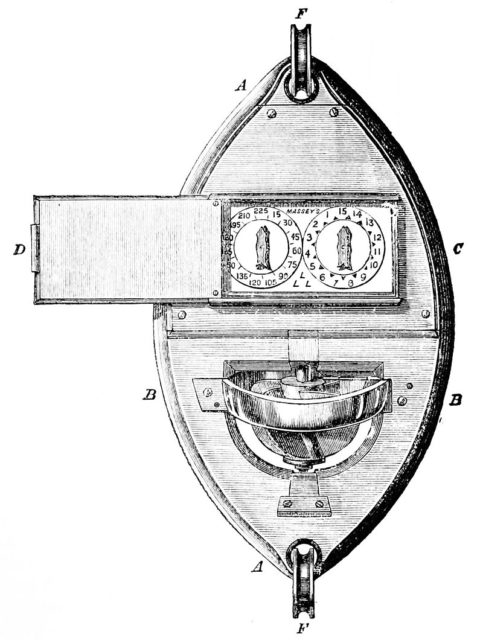
The problem with the early depth sounding devices was that they were made for relatively shallow waters. Seabed telegraphy started to advance in the second half of the 19th century.
The most reliable deep-sea sounding machine was invented and patented by Lord Kelvin himself. His device was very similar to the ancient sounding line, but instead of a rope, it had a drum of piano wire attached to a lead which was much heavier than usual. This machine also had a dial that measured the length of the wire.
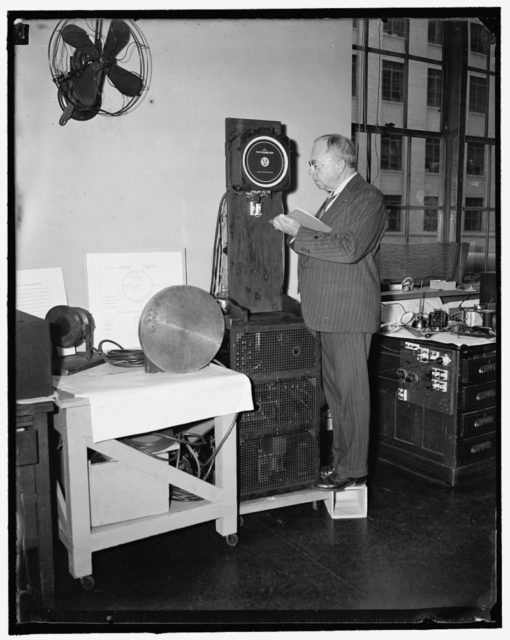
All of these machines, even the primitive ones, were in use throughout the 20th century, up to the point when echo sounding was discovered.
In 1928, Herbert Grove Dorsey created the first practical fathometer – a water depth measuring instrument for ships. This device used the principles of echo sounding and gave way to the modern day SONAR technology that is crucial in sea navigation.
